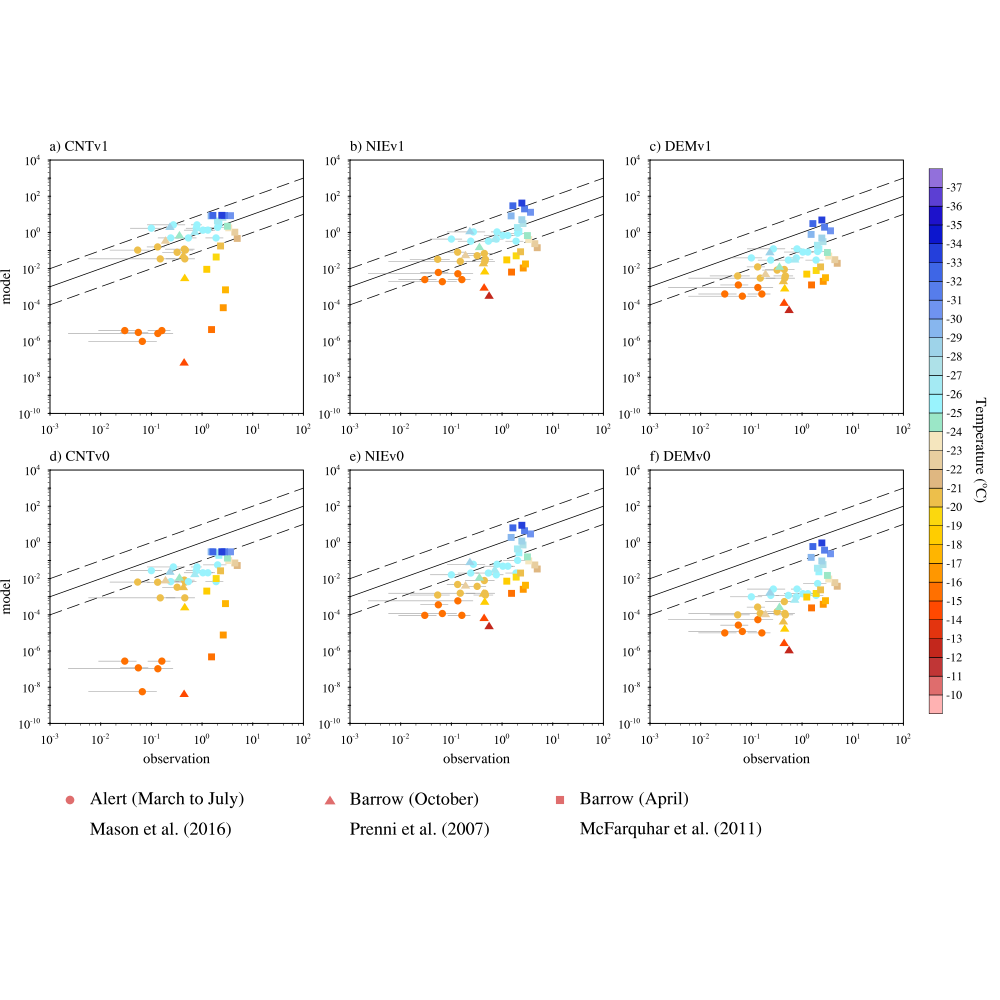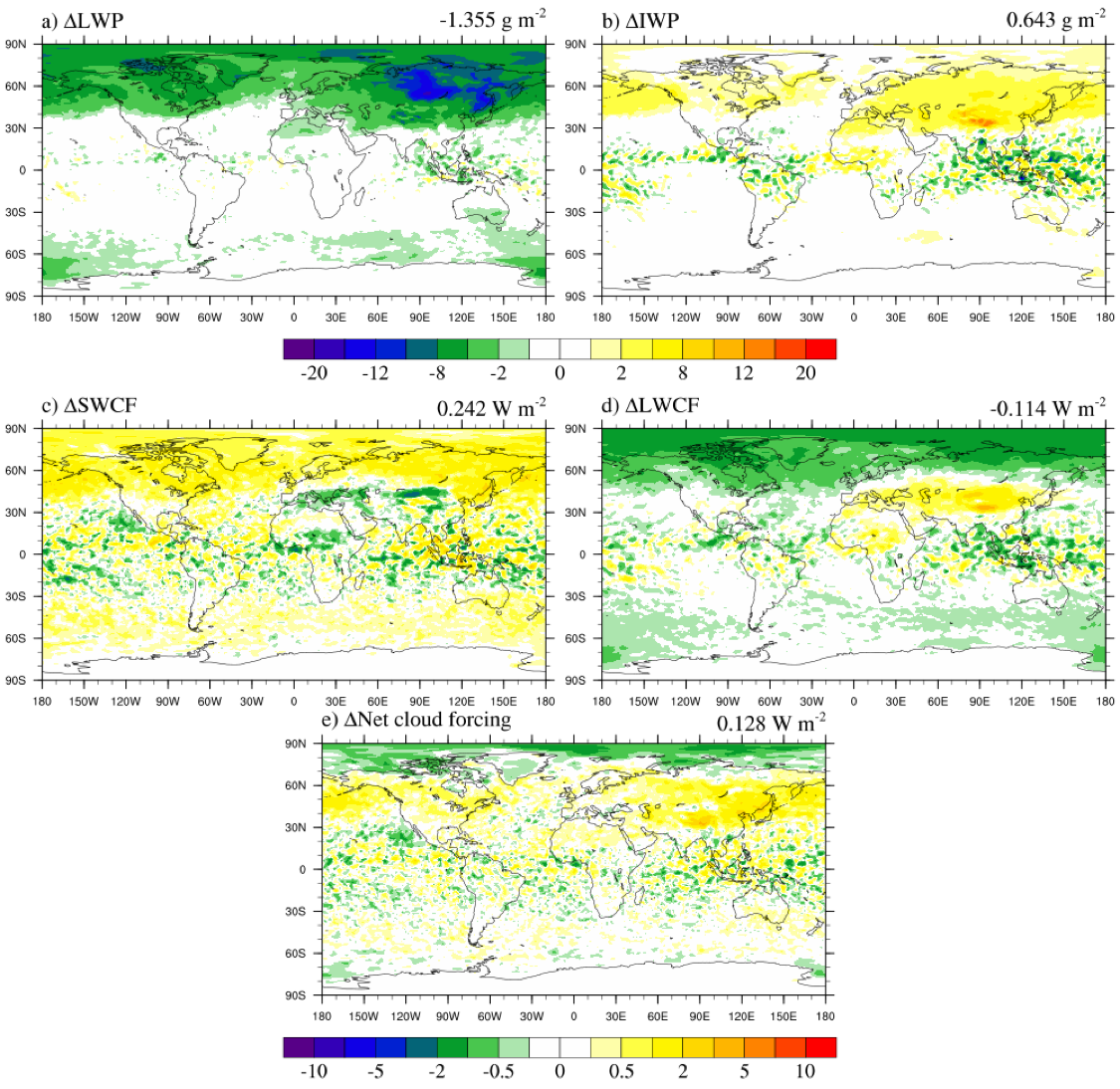Dust indirect climate effects by glaciating mixed-phase clouds
Submitter:
Liu, Xiaohong — Texas A&M University
Area of research:
Aerosol Processes
Journal Reference:
Science
Mineral dust is one of the most important ice nucleating particles (INPs) in the atmosphere. It can influence the cloud phase transition and radiative forcing of mixed-phase clouds, which are crucial to global energy budget and climate. In this study, we investigate dust indirect effects on mixed-phase clouds through acting as INPs using three different ice nucleation parameterizations in global climate models. The simulated dust and INP concentrations are evaluated against observations in the Northern Hemisphere (NH).
Impact
This research evaluates model performance in simulating dust and primary ice nucleation process and quantifies the dust indirect radiative forcing. Compared with observations, the model with better dust simulation does better in simulating INP concentrations in the Arctic. We also find that dust INPs induce global warming cloud radiative effects with a predominant warming in the NH midlatitudes and a cooling in the Arctic.
Summary
In this study, we investigate the dust indirect effects on mixed-phase clouds by acting as INPs, using three dust-specific ice nucleation parameterizations – classical nucleation theory (CNT), Niemand et al. (2012; NIE), and DeMott et al. (2015; DEM) – in two versions (v1 and v0) of the U.S. Department of Energy (DOE) Energy Exascale Earth System Model (E3SM). The simulated dust is evaluated against Cloud‐Aerosol Lidar and Infrared Pathfinder Satellite Observation (CALIPSO) retrievals, while the modeled INP concentrations are compared with measurements conducted during several field campaigns, including the ARM Mixed-Phase Arctic Clouds Experiment (MPACE) and Indirect and Semi-Direct Aerosol Campaign (ISDAC). For both dust and INPs, E3SM shows large low bias in the Arctic. However, improvements are seen in the newly released version (E3SM v1). Constrained by observations, E3SM shows that dust INPs result in a net warming effect (0.18 to 0.76 W/m2) in the NH midlatitudes, a generally net cooling effect (0.18 to -1.95 W/m2) in the Arctic, and a net warming effect (0.05 to 0.26 W/m2) globally.



